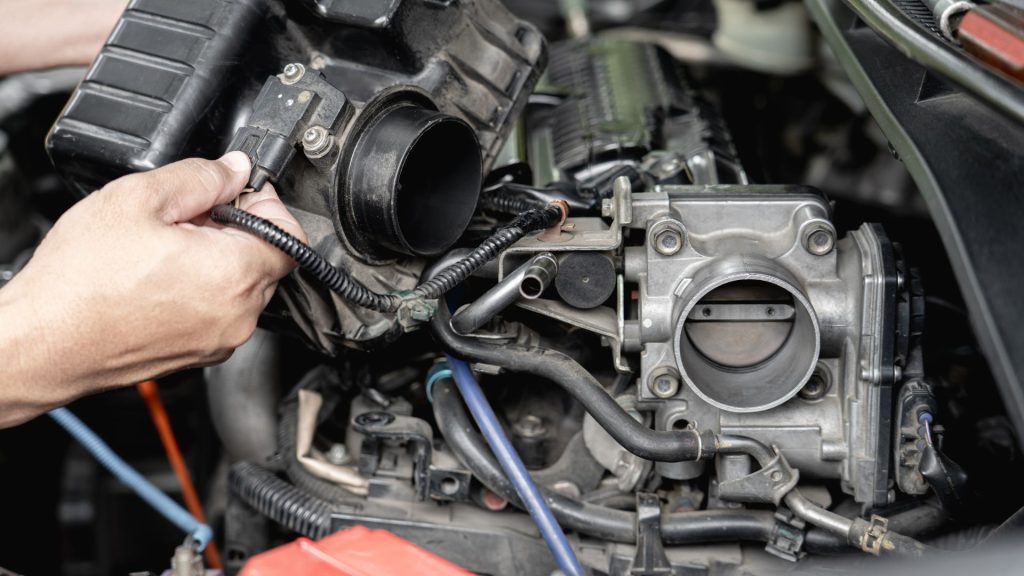Bad throttle position sensor symptoms — causes and fixes
Recognize the signs of a faulty throttle position sensor and its impact on your vehicle's performance.

There are many important parts in the air and fuel delivery systems of internal combustion vehicles. One of those parts that you wouldn’t initially think of is the throttle position valve. This valve is operated by a sensor that determines its position, and when open, the valve lets air through and into the intake manifold.
That gives you all the more reason to act quickly as soon as you notice bad throttle position sensor symptoms. Still, it’s often difficult to distinguish the symptoms of failed throttle position sensor from other parts that affect your engine’s operation. That’s why our team decided to provide you with all the information needed in this guide.
What does the throttle position sensor do?

The throttle position sensor (TPS) is in charge of operating the valve which lets air through it and directs it into the intake manifold. The operation of this valve is crucial for proper combustion since the amount of air and fuel needs to be precise.
Along with the mass air flow sensor, the throttle position sensor is among the most important sensors for combustion. These two sensors contribute to proper combustion since the MAF sensor calculates the amount of fuel accordingly to the amount of air that passes through it.
The throttle position sensor opens the throttle valve as you step on the gas pedal. The more pressure you apply to the pedal, the more the valve will open. Thanks to this, more air is let into the intake manifold and the combustion chambers.
So, you get the picture of why it’s a big problem if the throttle position sensor malfunctions. It can’t do its job of controlling the valve anymore, and the valve can even get stuck open. This triggers serious consequences in terms of car jerking while driving and not reacting to the gas properly.
Main signs of a bad TPS

It’s not an easy task to recognize the symptoms of a bad throttle position sensor. It often reflects in some consequences that are similar to vacuum leaks such as a sudden shift in RPMs while driving. You can use a scanner tool to check for any ECU codes that tell you your TPS has malfunctioned.
These codes are mainly from P0120 to P0124, and they relate to bad TPS circuits, input, or switch problems. Here are some of the main symptoms of a bad throttle position sensor visible even without using a scanner:
- Rough idling
- Power loss when accelerating
- Car jerking or shaking while driving
- Check the engine light glowing on the dashboard
The bad thing is – you can’t recognize the failing throttle position sensor based on these symptoms alone. So, it takes either using a scanner tool to look for bad TPS codes or driving to a mechanic. Your mechanic will know how to use the ohm meter to test the TPS switch or compare the throttle response and positions to factory settings.
Constant changes in RPMs when idle
This can also be a sign of a vacuum leak, but if your car’s RPMs go up and down when idle, it could be due to a faulty throttle position sensor. If the sensor isn’t working, the valve could remain stuck open, and air can pass through it.
You may see the RPM gauge going up and down, and you might even feel a vibration similar to a misfire when stationary. It’s a sign you should get the car checked and inspect the functionality of the TPS.
Poor engine performance
Another common symptom of a failed throttle position sensor is a loss of power as you press the gas pedal. The pressure from the gas pedal is transformed into air intake as the sensor recognizes the pressure level and opens the valve accordingly.
However, if the sensor goes bad, miscalculations could lead to a bad throttle valve reaction, which results in insufficient combustion. So, you might pressure the gas pedal since your car isn’t accelerating properly. It will seem as if the car’s computer is confused and this can even lead to misfires. Fluctuating air flow won’t trigger combustion properly with the constant supply of fuel.
Jerking and shaking sensations
If you sense like your car is jerking and shaking while trying to pull, it’s possibly the consequence of the power loss caused by bad TPS. You can test this by stepping on the gas right after shifting gears. A bad TPS won’t be able to measure the exact throttle position soon after the gear is changed.
So, instead of pulling in linear motion, you’ll sense like the front of your car goes and bounces back. There’s no proper acceleration and struggles to accelerate after a gear shift indicates there’s no proper airflow into the cylinder.
Check engine light appears
Usually, when a TPS goes bad, the “check engine” light appears on the dashboard as well. While it’s not a definite sign, if you experience any of the previously listed symptoms with it, it’s all the more reason to check the throttle position sensor.
If the warning light appears, it’s a sign you should at least try using a scanner tool to diagnose the problem. If not attended to on time, this problem can even cause your engine to stall while you are driving.
Fixing the throttle position sensor trouble
If your throttle position sensor goes bad, it might be a programming fault or complete malfunction. Either way, sometimes resetting the computer can fix the issue, so it’s worth trying. You can do this by taking out the ECU fuse from the fuse box and carefully returning it to place.
If that doesn’t solve the issue, you’ll need to replace the TPS. It could cost anywhere from $150 to $500, depending on whether your TPS is easily accessible. Sometimes, your mechanic will have to deal with the intake manifold to reach the sensor. Even after replacing the sensor, it’s worth re-programming it to get the ECU readings aligned with the new sensor’s data.
Our take
Overall, this guide hopefully deals with the main signs of a bad TPS to give you an idea of when you should act. If you spot any bad throttle position sensor symptoms, it’s best to act on time and get the sensor reprogrammed or replaced.
If you don’t you can just cause further problems which may even lead to engine stalling. Pay attention to the main signs like the RPM shifts or constant jerking and power loss while driving.
What happens when the throttle position sensor goes bad?
If the throttle position sensor goes bad, you’ll notice considerable RPM shifts when idle, and power loss or engine hiccups when driving.
How do I know if my throttle position sensor is bad?
You can know if your throttle position sensor is bad by using a scanner tool to check for error codes from P0120 to P0124, or based on sudden idle surges.
What causes a throttle body sensor to go bad?
Internal contamination or electrical errors can cause the throttle body sensor to go bad.
How do I test the throttle position sensor?
You can test the throttle position sensor by using a digital multimeter to check if the sensor is working properly.